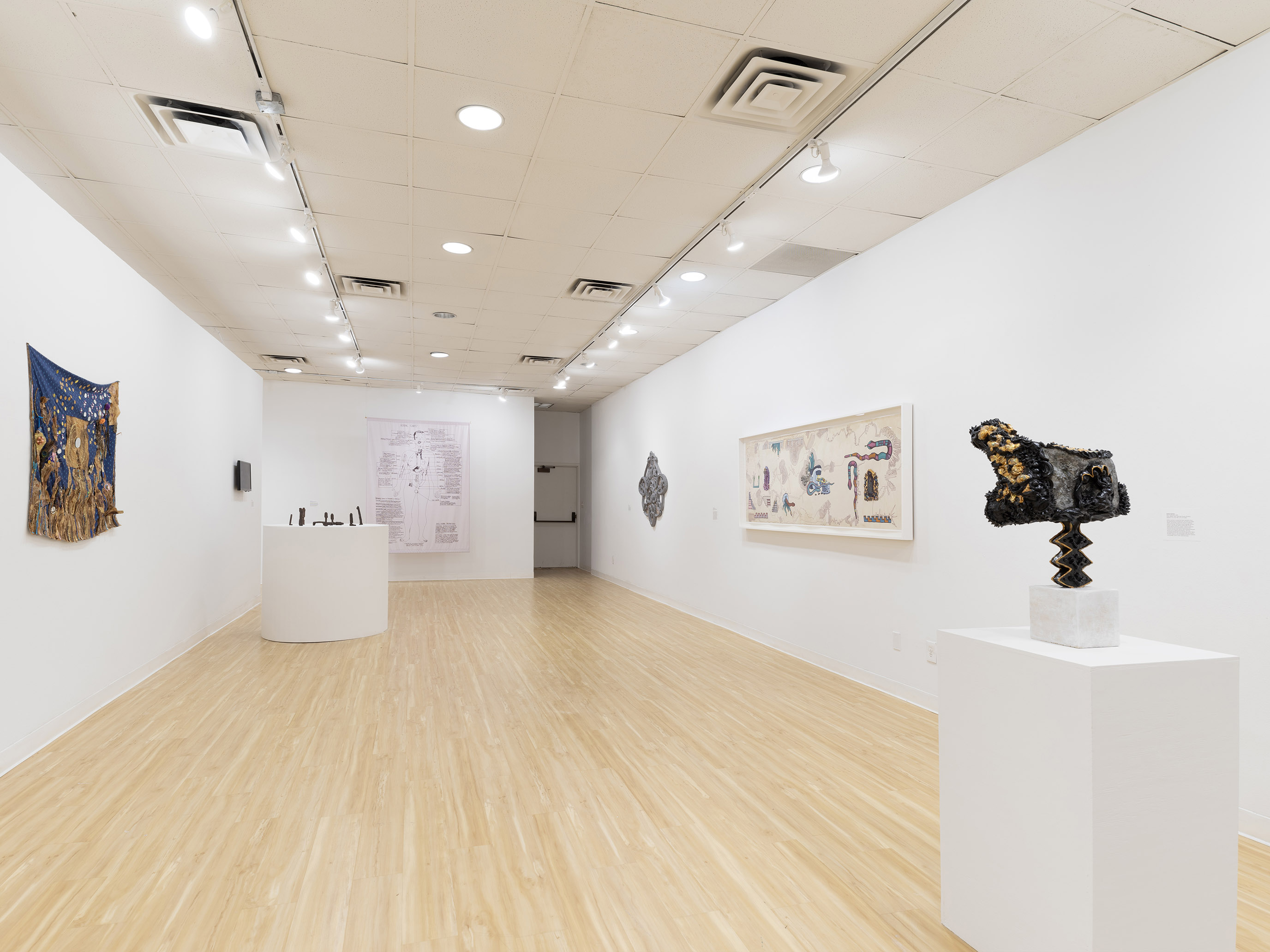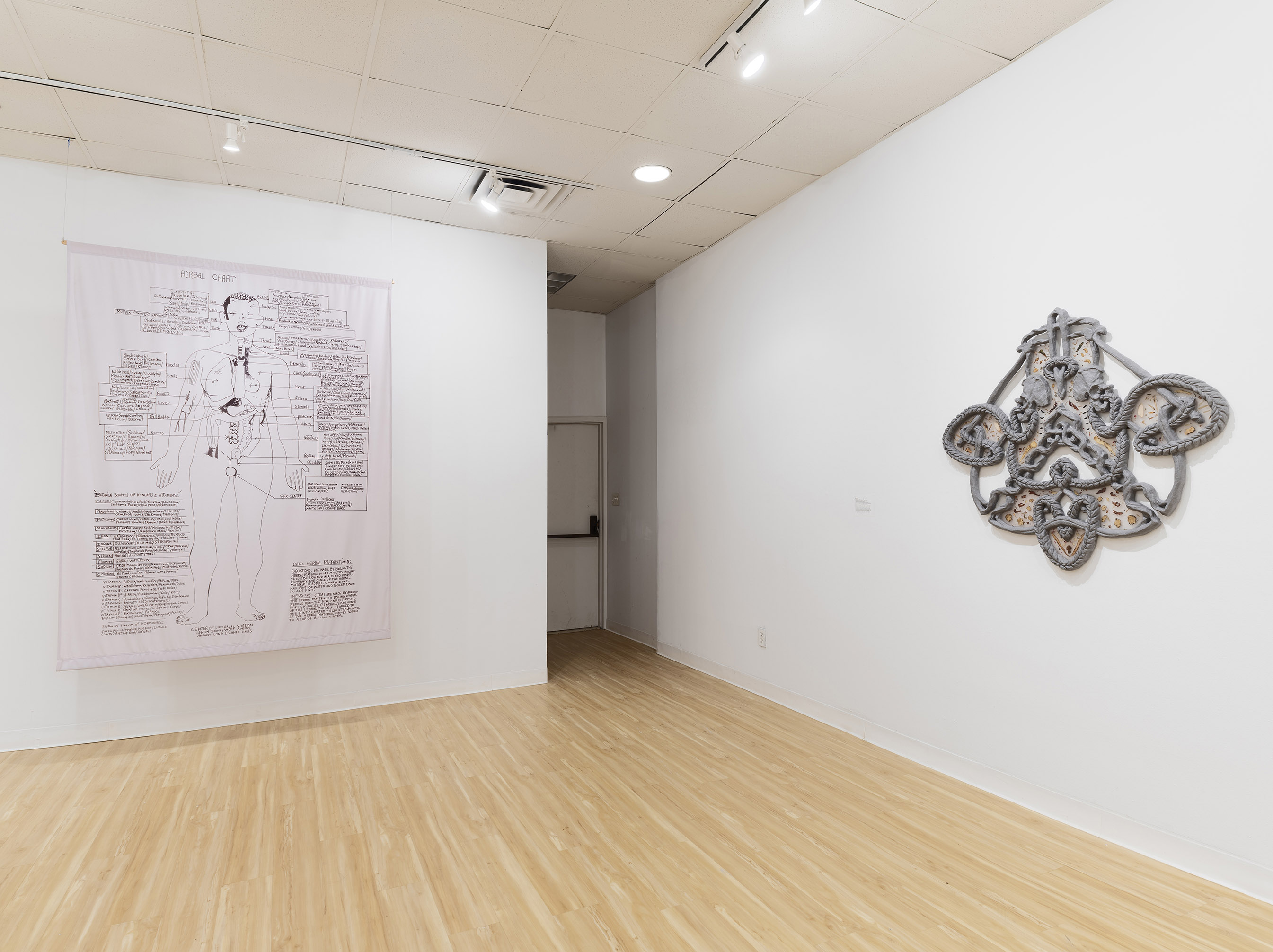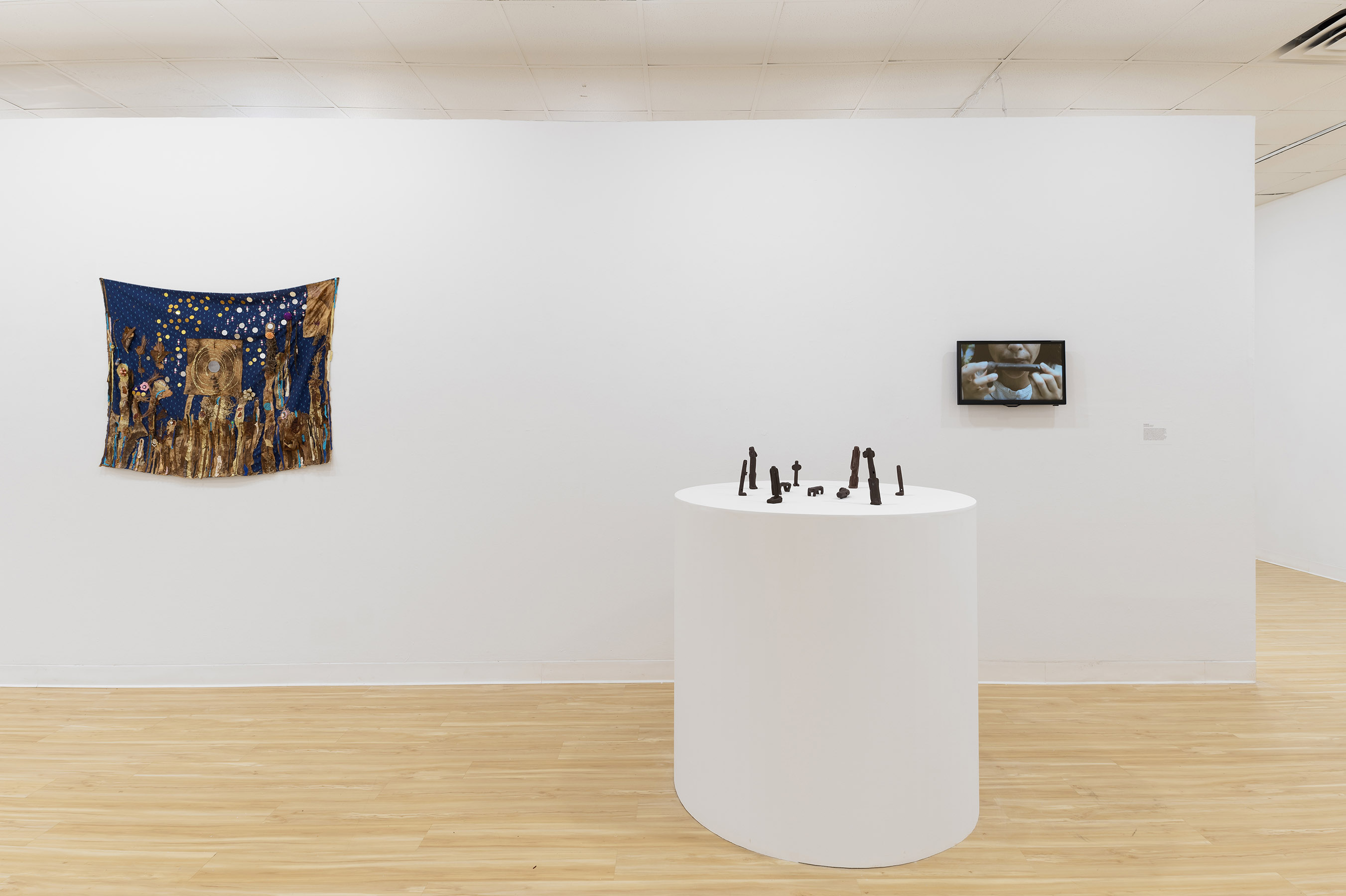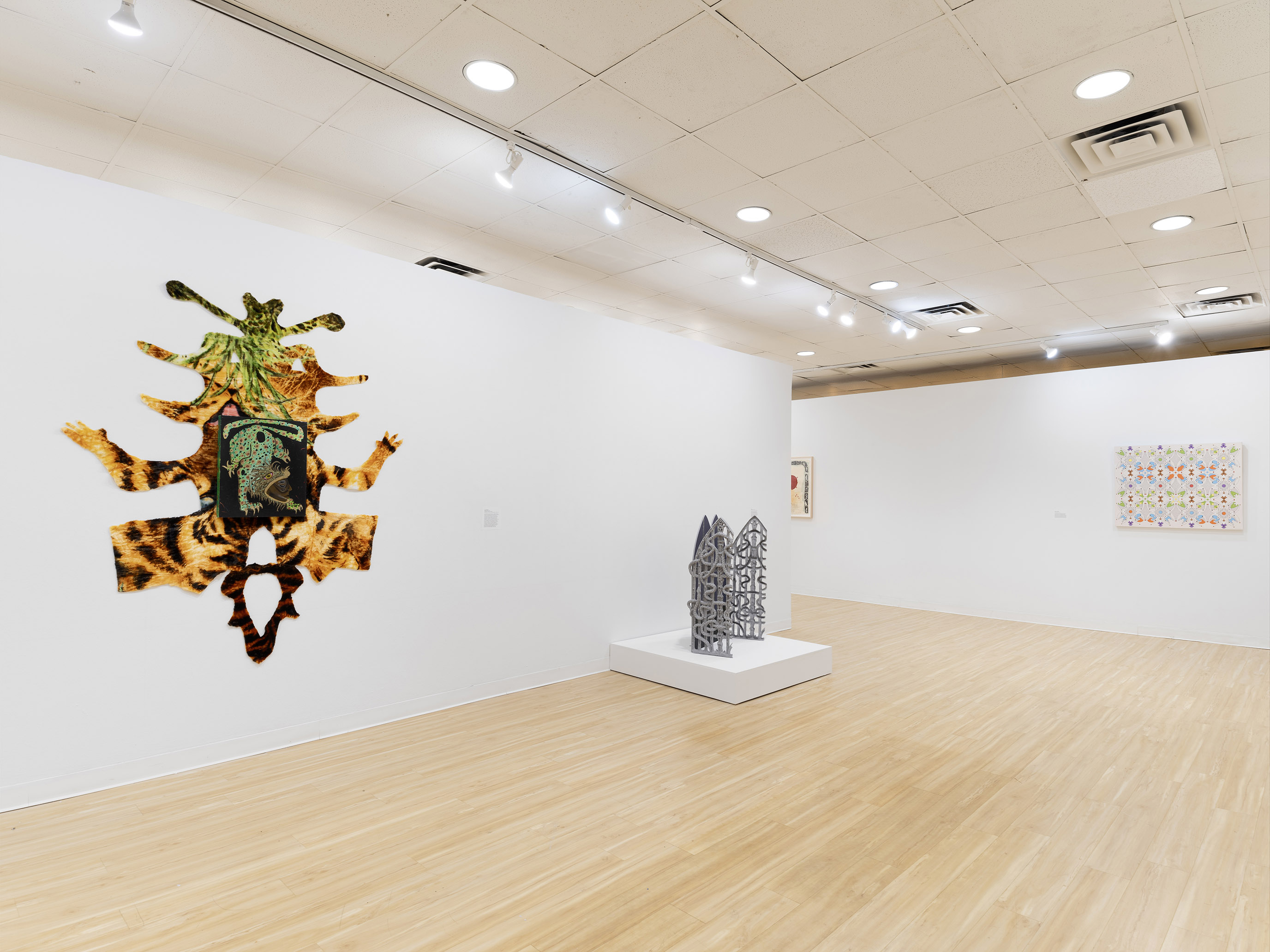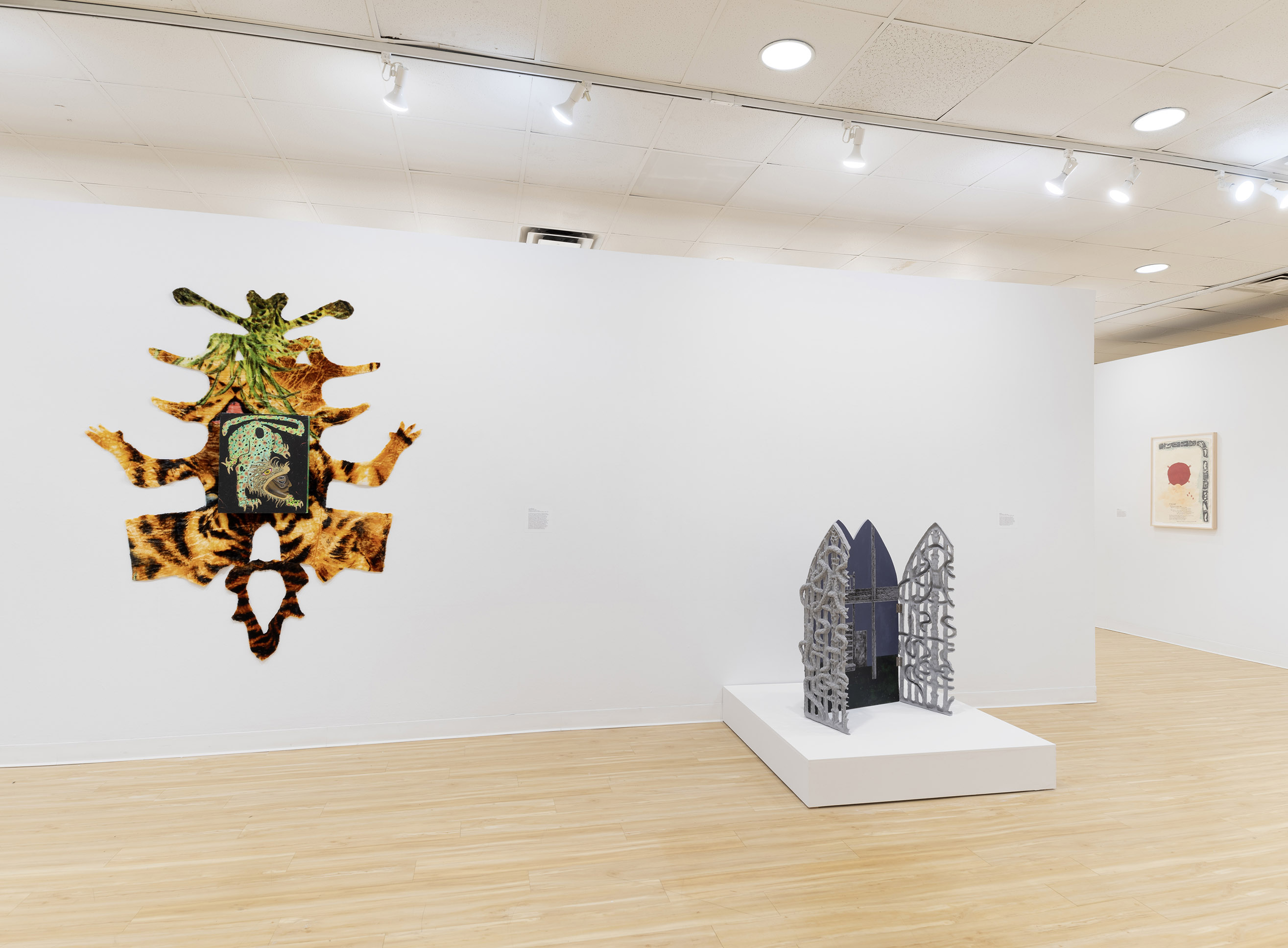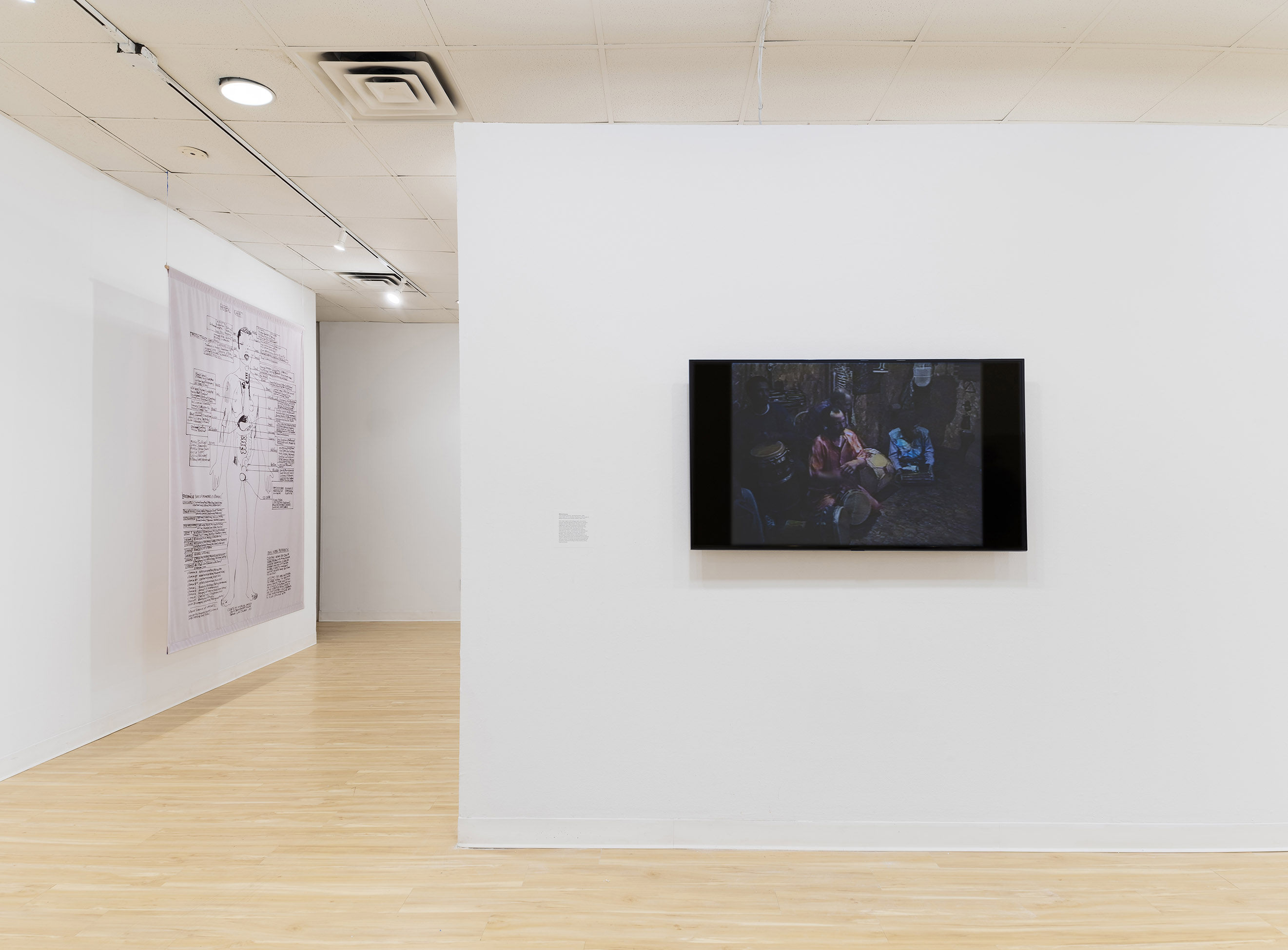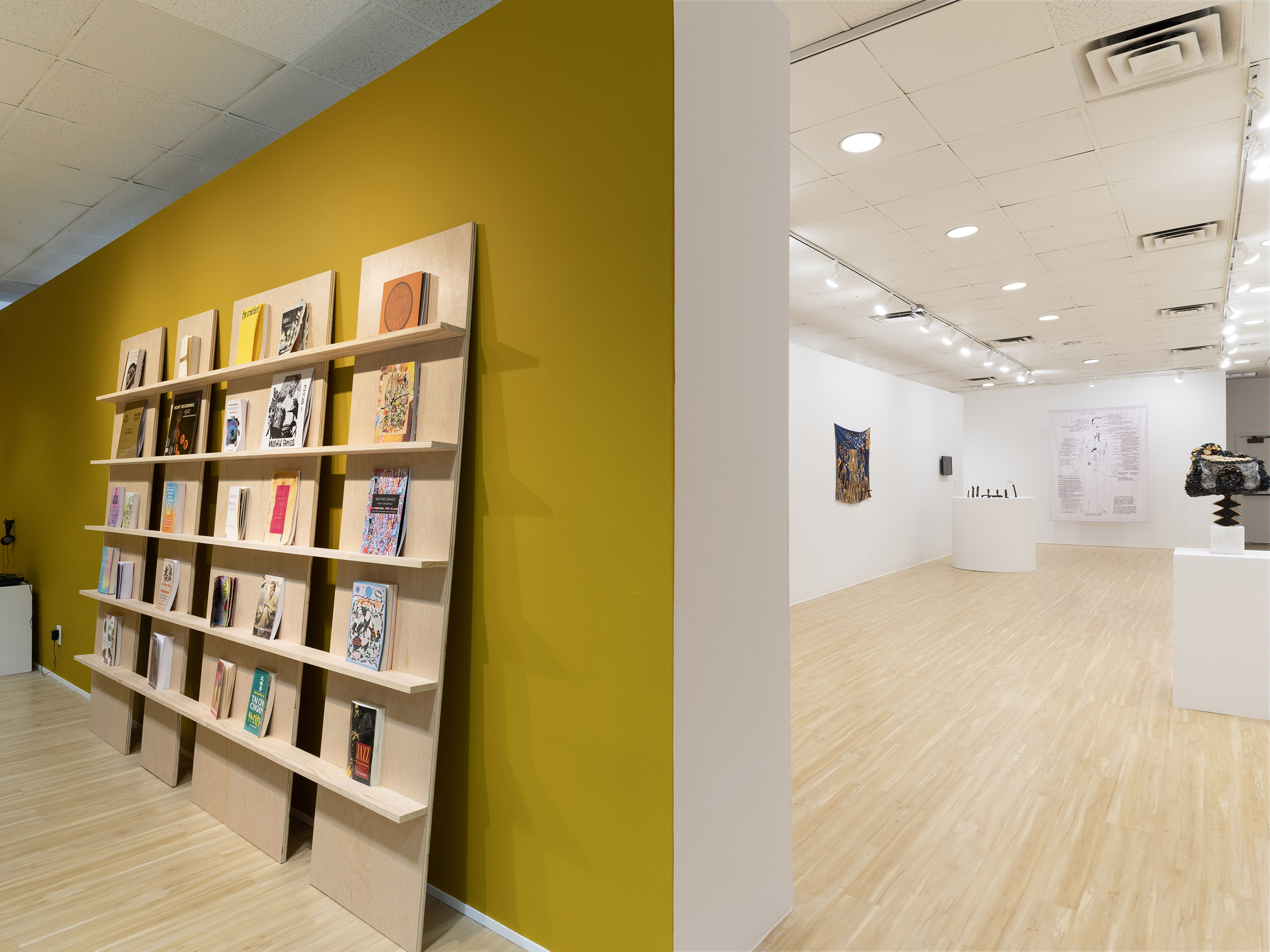To mend the heat
To mend the heat

Image: Luis Sahagún, Nagual no. 03, 2024, Oil pastel and paint on panel, 20 x 16 inches. Courtesy of the artist and LatchKey Gallery, New York.
September 19, 2024 – December 7, 2024
Opening Reception: Thursday, September 19, 2024, 4:30–7:30pm
Featured Artists: Damali Abrams, Milford Graves, Kahori Kamiya, Koyoltzintli, Wen Liu, Guadalupe Maravilla, Luis Sahagún, Marcelo Sturgeon
Opening Reception: Thursday, September 19, 2024, 4:30–7:30pm
Featured Artists: Damali Abrams, Milford Graves, Kahori Kamiya, Koyoltzintli, Wen Liu, Guadalupe Maravilla, Luis Sahagún, Marcelo Sturgeon
Standing near a body of water / Stomp feet so body is in connection to earth / And feet become drumsticks / Move fingers so in the air they imitate the teeths of a shell / Cover yourself with shells, spondylus princeps/calcifer / See them covering you, protecting you, informing you, While you move and stomp and create heat…
[Excerpt from a drawing featured in the exhibition by artist Koyoltzintli that outlines directions for a ritual, To Mend the Heat, to perform in front of a body of water. The enactment of this work aims to both cool down the rising heat within the body but also decrease the rising temperatures of the oceans.]
The Yeh Art Gallery at St. John’s University is thrilled to present To Mend the Heat, a group exhibition bringing together eight artists working at the intersection of alternative medicine, healing, and art-making. Focusing on artists who engage with healing practices directly in their work, this exhibition presents an opportunity to consider how various approaches to material, form, sound, process, and imagery can convey the energy and knowledge learned from the traditions of Chinese medicine, Yorubic medicine, Curanderismo and other cultures around the world. The exhibition specifically builds off of the legacy of artist and percussionist Milford Graves (1941–2021) who practiced herbalism, acupuncture, martial arts, and studied heart rhythms at his home in Jamaica, Queens for many years—a place he referred to as the “Center for Universal Wisdom.” In this exhibition, plant medicine, Reiki, martial arts, sound baths and other techniques inform sculptures, paintings, drawings, music, performance, and video, creating a space to honor and learn from the healing methods that communities around the world, and locally in Queens, continue to cultivate. Through this gathering of artists, To Mend the Heat asks: What can centuries of indigenous healing practices teach us now, and how can artists play a unique role as translators and messengers sharing this information in new ways?
Sound, song and vibration as a form of medicine and storytelling play an integral role in a number of the artists' works in the exhibition. Koyoltzintli presents a series of ceramic flutes she refers to as “objetos sonoros” or Sound Objects—pre-Columbian-inspired instruments that carry the knowledge and healing power from her ancestors in the Andean mountains and coast of Ecuador. Two works on paper by Guadalupe Maravilla—known for his “Disease Thrower” sculptures and sound bath performances—combine various elements of his “retablos,” a body of work that involves retracing his path to escape the Salvadorian Civil War as a child. The reverberating line drawings in Maravilla’s works are inspired by tripa chuca (“dirty guts”), a numbers game from his childhood in El Salvador that he played along his unaccompanied migration to the U.S. The pathways formed in the drawings resemble the intestinal track— symbolic imagery that the artist continues to use throughout his work as his own battle with cancer began in this area of the body. A drawing of an herbal chart by Milford Graves outlines the human anatomy identifying the corresponding medicinal plants that can heal different parts of the body, while a video plays documentation from Graves’ garden and martial arts studio in Jamaica, Queens where he and others—immersed in percussive rhythms—practice a martial arts form Graves referred to as “Yara,” derived from a Yoruba word meaning “to be quick, nimble and flexible.” Marcelo Sturgeon‘s paintings retrace the visual experience induced by listening to the icaros—songs sung by shamans during healing ceremonies, traditionally in South America where Sturgeon trained for many years. Sturgeon’s complex patterns and color schemes emerge through his experience with the spiritual and healing traditions of the Amazonia, and the vast landscape of folk songs, stories, archetypal animals, rituals and cosmovision.
Other works explore how material, form, image and process can transmit healing energy. Damali Abrams’ dense, visceral collages incorporate materials such as medicinal plants, blood, tears, hair, coffee, and shimmering textiles influenced by her Guyanese family. Abrams brings her knowledge of herbalism and ancient folk medicine into performance, video, artist books and her expansive collage practice, all of which share in the belief that the material manifestation of these creations have healing potential. Sharing a visual language with go-shintai—devotional objects traditionally found nearby Shinto shrines—Kahori Kamiya’s sculptures draw inspiration from her experiences of motherhood, her work as a Reiki healer, and ancient Japanese traditions. Luis Sahagún’ engages in a variety of approaches inspired by his work as a practitioner of Curanderismo, a healing practice found in the indigenous cultures of Mexico and Latin America. In one series of Sahagún’s paintings, portraiture acts as an individualized form of cleansing amidst other elements of a healing ritual or treatment. Wen Liu brings her own personal healing journey directly into her work, embedding specific constellations of herbs, prescribed for her by a Traditional Chinese Medicine doctor, into intricately molded anatomical forms.
In conjunction with To Mend the Heat, the front room of the Yeh Art Gallery will transform into an interactive reading room and learning space for visitors to engage with a variety of materials related to the exhibition’s themes. A collection of books, zines, records, and videos complements the artwork on view, providing opportunities for students, faculty and the general public to further explore specific artists and topics.
